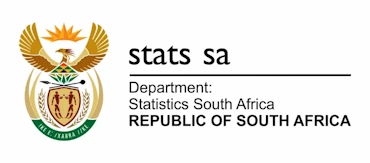Category Archives: Stats Biz
Stats Biz – January 2025
The new inflation basket reflects current trends in consumer behaviour. Air fryers, e-hailing services, refills for e-cigarettes, streaming services and toy building bricks (think LEGO) have entered the basket. Products leaving the basket include graters, wax shoe polish, TV decoders, magazines and – sadly – teddy bears. Explore the new inflation basket, as well as read more »
Stats Biz – November 2024
Agriculture took the wind out of the economy’s sails in the third quarter, dragging overall economic growth into negative territory. Real gross domestic product (GDP) declined by 0,3%, with agriculture the largest negative contributor. Transport, trade and government also contributed to the slowdown. Explore the latest GDP numbers, as well as other stories, in this read more »
Stats Biz – October 2024
Each province has its own unique economic profile. The latest set of regional gross domestic product (GDP) figures paint a picture of what drives economic activity in each province. The data also show what each province brings to the economic table of the country. Explore provincial economic data, as well as other stories, in this read more »
Stats Biz – September 2024
You can’t teach a hungry child. In 1994, the South African government established the National School Nutrition Programme (NSNP), a nationwide project that provides meals to schools in poorer communities. Stats SA provides a glimpse into how much money is spent on this vitally important initiative. Explore school nutrition, as well as other stories, in read more »
Stats Biz – August 2024
The electricity, gas & water supply industry was the star performer in the second quarter of 2024, according to the latest gross domestic product (GDP) data. The industry grew by 3,1% compared with the first quarter, driven by increased electricity generation and water distribution. If we ignore the topsy-turvy economic environment caused by the pandemic read more »
Stats Biz – July 2024
The most striking change in the telecommunications sector over the period 2019–2022 was a rapid fall of ADSL and the rise of fibre optic broadband. In 2019, ADSL was the largest generator of income in the internet access services category, falling to third place in 2022. Fibre optic broadband expanded to fill the gap, increasing read more »
Stats Biz – June 2024
National government spending topped R2,04 trillion in the 2022/23 financial year, representing a rise of 6,1% from R1,92 trillion in 2021/22. Just over half of total expenses was allocated to grants paid to other levels of government, institutions and foreign governments. Not to be confused with social grants, this line item represents financial transfers that read more »
Stats Biz – May 2024
Real gross domestic product (GDP) contracted by a marginal 0,1% in the first three months of 2024. This followed a revised 0,3% increase in the fourth quarter of 2023. Weaker manufacturing, mining and construction drove much of the downward momentum on the production side of the economy, while the expenditure side witnessed a decline across read more »
Stats Biz – April 2024
Stats SA collects information on education fees once a year in March. According to the latest review, education is 6,3% more expensive in 2024 than in 2023. High schools recorded the most significant fee increases, followed by primary schools and tertiary institutions. Explore education inflation, as well as other stories, in this edition of Stats read more »
Stats Biz – March 2024
A water resource account is a balance sheet for a geographical area, providing data on water inflows, water outflows and changes in water storage. Detailed experimental accounts, published for the period 2015 to 2021, provide modelled estimates of water flows for three catchment areas. Explore the evaporation ratio, as well as other stories, in this read more »

